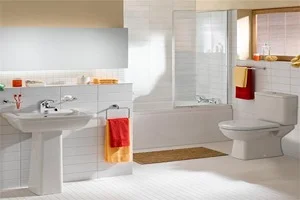

1.Toilet Waterproofing | Bathroom Waterproofing | Wet area waterproofing – importance
Toilet waterproofing, bathroom waterproofing, and wet area waterproofing are essential components of any home or building construction project. Here are some reasons why:
- Protection against water damage: Wet areas such as toilets and bathrooms are particularly susceptible to water damage due to constant exposure to moisture. Waterproofing these areas provides a protective barrier that prevents water from seeping into the structure of the building, which can cause damage to walls, floors, and other structural components.
- Prevents mold and mildew: Moisture and humidity provide the perfect breeding ground for mold and mildew. By waterproofing wet areas, you can prevent the growth of these harmful organisms, which can cause health problems and weaken the structure of the building.
- Increases the lifespan of the building: By preventing water damage and the growth of mold and mildew, waterproofing can help extend the lifespan of a building. This can help save money in the long run by reducing the need for repairs and maintenance.
- Improves hygiene: Waterproofing makes it easier to clean wet areas such as bathrooms and toilets, which can improve hygiene and reduce the risk of infection and disease.
- Enhances property value: A properly waterproofed bathroom or wet area is an attractive feature for potential buyers or renters, as it provides a sense of security and protection against water damage.
- Compliance with building codes: Many building codes require waterproofing in wet areas to prevent damage and ensure the safety of occupants.
2. available systems for Toilet Waterproofing | Bathroom Waterproofing | Wet area waterproofing
There are various systems available for toilet waterproofing, bathroom waterproofing, and wet area waterproofing. Some of the most common systems include:
- Liquid Applied Membrane: This system involves applying a liquid membrane directly onto the surface to be waterproofed. It is highly effective and can be used on a variety of surfaces, including concrete and masonry.
- Sheet Membrane: This system involves applying a sheet of waterproof material, such as PVC or bitumen (APP, SBS) , onto the surface to be waterproofed. It is highly durable and effective but may be more difficult to install than liquid applied membrane systems.
- Cementitious Coating: This system involves applying a cement-based coating onto the surface to be waterproofed. It is highly effective but may require a longer curing time and is not suitable for surfaces that are subject to movement.
- Hybrid Membrane: This system combines the advantages of two or more waterproofing systems, such as sheet membrane and liquid applied membrane systems, to provide a highly effective and durable waterproofing solution.
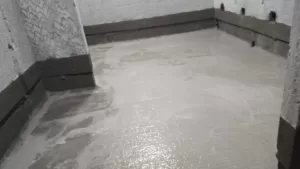

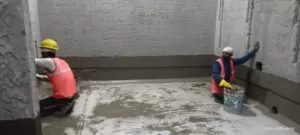

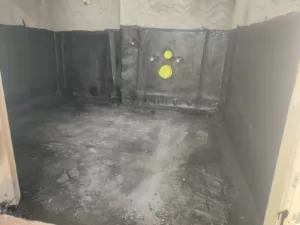

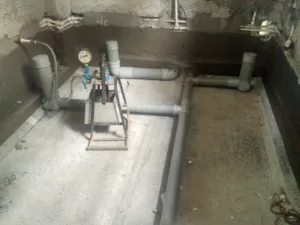

3. selection of Toilet Waterproofing | Bathroom Waterproofing | Wet area waterproofing system
Selecting the right toilet waterproofing, bathroom waterproofing, or wet area waterproofing system for your project depends on several factors, including the type of surface to be waterproofed, the level of exposure to water and moisture, and your budget. Here are some key considerations when selecting a waterproofing system:
- Surface Type: Different waterproofing systems are suitable for different surfaces. For example, liquid applied membrane systems are suitable for concrete, masonry, and timber surfaces, while sheet membrane systems are ideal for flat surfaces. It’s important to choose a system that is compatible with the surface to be waterproofed.
- Exposure to Water and Moisture: The level of exposure to water and moisture is an important consideration when selecting a waterproofing system. For example, if the surface is frequently exposed to water, such as in a shower or a swimming pool, a highly durable system such as a polyurethane membrane may be more reliable.
- Budget: Waterproofing systems can vary in price, and it’s important to choose a system that fits within your budget. However, it’s also important to remember that choosing a cheaper system that is not suitable for the project requirements may end up costing more in the long run due to the need for repairs and maintenance.
- Professional Installation: The selection of a suitable waterproofing system should also be based on the expertise of the professional waterproofing contractor. They can help you make the right choice for your specific needs, and ensure that the installation is done correctly.
GEOLIZ WATERPROOFERS PVT. LTD.
Waterproofing Products & Services Guide
For details on other waterproofing products & Services
